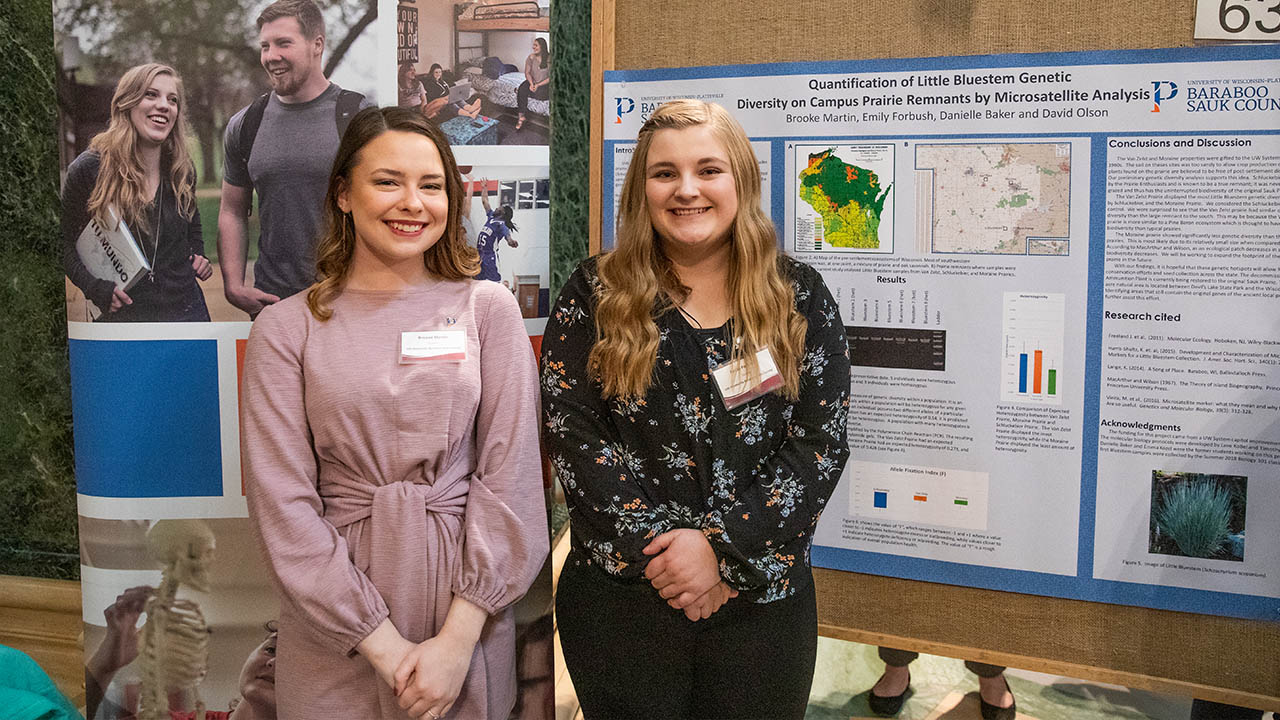
Ongoing work, involving students, in analyzing, cataloging, and sharing the DNA profiles of native grasses and other plant life in preserves and open spaces around Sauk County will aid prairie restoration efforts in communities across Wisconsin and in other regions as well. That’s according to research currently performed by University of Wisconsin-Platteville Baraboo Sauk County students Emily Forbush and Brooke Martin, who together are working to understand what grasses and plants make up a thriving prairie in the rocky and all-season conditions found near the campus. They will talk about their experience and their findings with legislators, state leaders, alumni and the public at the 17th annual Research in the Rotunda event in the state capitol in Madison, Wisconsin on Wednesday, March 11.
Working with Assistant Professor of Biological Sciences David J. Olson, from UW-Platteville Baraboo Sauk County, the students have been taking primarily samples of little blue-stem prairie grass from three areas in Sauk county – the Schluckebeir Prairie State Natural Area near Prairie du Sac, the Van Zelst Pine Barrens, west of Baraboo, and the Moraine Prairie, part of the Ice Age Trail adjacent to the campus. Once the samples are collected, they are desiccated with a moisture-removing compound, and then can have their DNA extracted and examined in the lab.
By taking these samples from spaces where successful restorations have occurred, and quantifying and cataloging the results, the DNA profiles can eventually be shared with others attempting restorations in their own areas, who are looking to choose the best combination of grasses to let their prairie thrive.
Martin and Forbush said they start with a mortal and pestle, grinding up samples into uniform weights and volumes, and then treat the samples with chemical and other compounds and run them through other equipment in the lab, and then into specialized gels. That eventually leads to visual representations of the DNA profiles of the different grasses. It’s a precise and specific set of processes, requiring the kinds of skills and techniques each hope to use in further study and employment.
“I plan to be a medical lab tech,” said Martin. “I’ve definitely been able to learn skills I’ll need for that.”
Forbush said she plans to major in biology and work on graduate-level research, and that this project has “given me a leg up on learning the different techniques of research and how to put everything together.”
The final pictures that will be on display are the culmination of a lot of strands of thoughtful work, and the students are eager to show the results.
“The most rewarding part is when you get to actually see a picture of the gel, all lit up, and it’s like seeing a Christmas tree,” said Forbush.